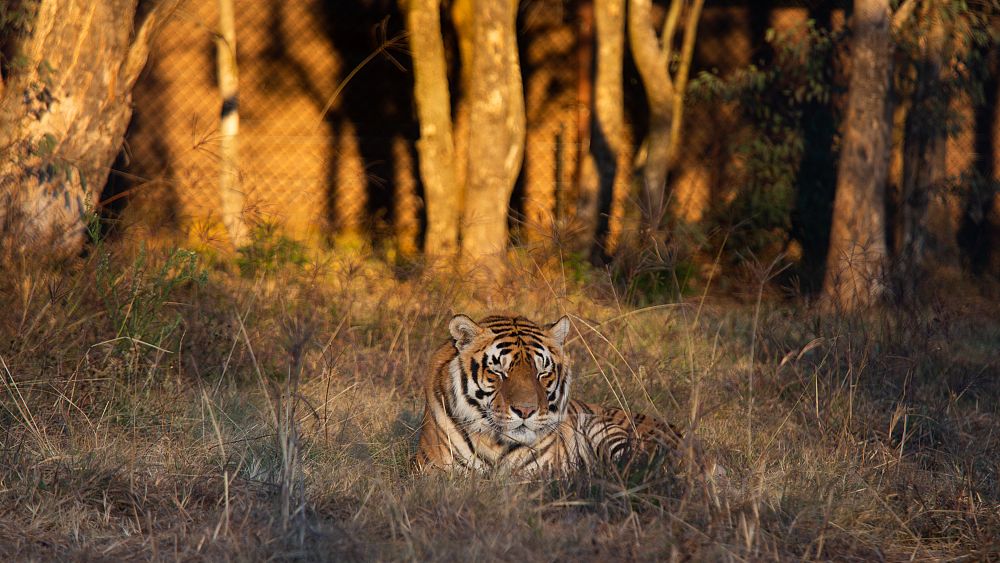
A year ago four bengal tigers were rescued from a train carriage on a farm in Argentina.
The two eldest animals had been left behind by a circus who no longer deemed them worthy of performing.
For 15 years, they had been trapped in the 75m² space, where their two male cubs, Gustavo and Messi, were born. They had no protection from the elements, including temperatures of 40°C or more during the summer.
They had survived the ordeal thanks to kind locals in San Luis, Argentina, who fed them.
When a local authority went to inspect the animals’ living conditions, they realised immediately that they needed a new home.
Though it is situated on an entirely different continent, LIONSROCK Big Cat Sanctuary in South Africa seemed like the perfect solution. With an expert team of vets and carers, they could provide a permanent and much more suitable home for the tigers.
The family of four were transported to the sanctuary by FOUR PAWS International last year but how are they looking one year on?
The journey to a new home
The first part of the journey was by road, travelling 700 km from the Argentinian countryside to Buenos Aires.
After 15 hours on the road, the tigers were loaded onto a plane in crates with soft floors, air holes and water.
Welfare officer, Velizar Angelov, had spent weeks with the cats before their journey building a relationship with them so he could better understand them and look after them during the long journey.
On 12 March 2022, after more than 70 hours of travel the tigers arrived at their new home.
It took some coaxing with tasty treats to lure female tiger, Mafalda from her crate, whereas 18-year-old Sandro bravely walked straight out.

The road to recovery
A specialist team of vets and carers closely monitored the big cats upon arrival. Such a long time in confined captivity had affected them mentally and physically.
Sandro, the oldest member of the family, was in a poor state of health. He had a broken canine tooth, kidney problems and was almost completely blind. Many of his health conditions are now controlled through a specialised diet and close surveillance.
At first the family were released into two smaller enclosures to help them acclimatise before moving them to a hectare of land.
“This adaptation phase is very important so they get used to everything around them and the new environment,” explains head caretaker, Hildegard Pilker.
One year on
Luciana D’Abramo, Chief Development officer at FOUR PAWS International, remembers Gustavo being extremely aggressive when she first visited him in Argentina. Now she says, “Seeing him lying down, it’s already a huge thing for me.”
“He wouldn’t stop moving. Coming and going and pacing and completely out of control. And now they’re both just relaxing,” she adds.
All four of the cats have adapted well to their new life and are enjoying roaming (and lazing) in their new home.
“Big cats are so resilient. It’s really wonderful to see how they are rehabilitated and they have started blooming and getting into their own personality,” says Hildegard Pilker.
Though the cats now live in an enclosure ‘100 times’ the size of their train carriage, an even bigger space with a house for them is under construction and will eventually be their forever home.
Watch the video above to see the train tigers in their new home.

